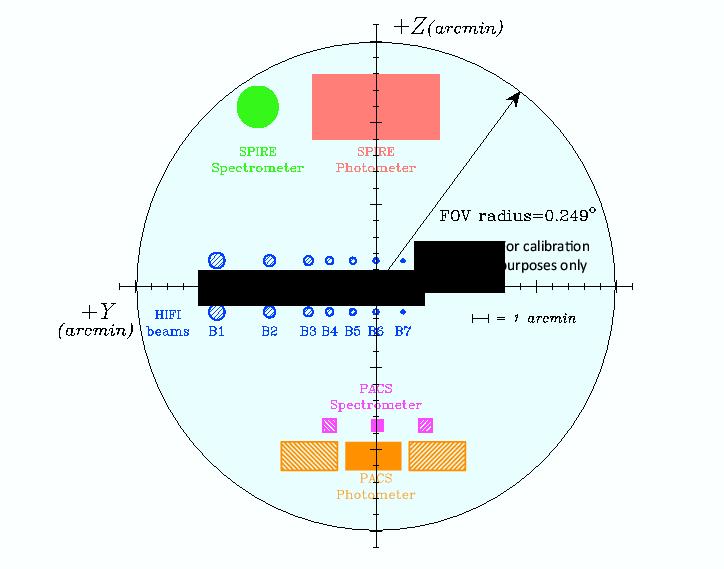Table of Contents
- 3.1. General aspects
- 3.2. Photometry with Herschel
- 3.3. Spectroscopy with Herschel
- 3.4. Obtaining observing time with Herschel
- 3.4.1. The standard method for obtaining observing time with Herschel
- 3.4.2. Urgent scheduling requests, DDT proposals and ToOs
- 3.4.3. Ground station access to Herschel
- 3.4.4. Herschel reaction time to urgent scheduling requests
- 3.4.5. DDT requests
- 3.4.6. Target of Opportunity (ToO) requests
- 3.4.7. Processing an urgent scheduling request
Herschel was a versatile observatory with a wide range of capabilities that covered point-source photometry, imaging, large area mapping and spectroscopy at both intermediate and high resolution. Despite the relatively small size of far-IR detectors compared to their visible and near-IR equivalents, it could map large areas of sky efficiently to faint limits. The telescope was designed to give diffraction-limited images - resolution 6 arcseconds - at 90 microns but, in space, it actually performs significantly better than this, with diffraction-limited images being seen as short as 70 microns, with a FWHM of 5.5 arcseconds at this wavelength. In mapping mode, at fast scan speeds there is, as is logical, some degradation of the PSF in the direction of scan.
The Herschel Space Observatory covered the wavelength range from approximately 55 - 672 microns. This corresponds to the maximum of emission for black bodies in the range from 5-50K approximately. Hence Herschel was be best suited to observing icy outer solar system objects and cool and cold dust in the universe, both in the rest frame and redshifted. A prime objective has been to study the formation of galaxies in the early universe, as cool dust is an excellent tracer of star formation. The Herschel range was also the one at which cool and cold gases emit their strongest lines, meaning that Herschel was also a superb laboratory for examining the chemistry of planetary atmospheres and of the interstellar medium.
Figure 3.1. The Herschel Focal Plane showing the field of view of the telescope and the positions of the different instrument apertures within it. The purpose of the telescope SIAM (Spacecraft Instrument Alignment Matrix) was to provide exact offsets to each of the apertures from the reference position used in pointing so that the target is accurately centred in the aperture of interest.
The Herschel Focal Plane is shown in Figure 3.1. The positions of the different instrument arrays and apertures are labelled. The full, unvignetted field of view is approximately half a degree. The purpose of the spacecraft SIAM (Spacecraft Instrument Alignment Matrix) was to set the correct off-sets to allow Herschel to point accurately to each individual aperture on demand from the target reference position. Accurate determination of the SIAM was a critical part of commissioning the telescope and its refinement through the mission was important to take advantage of the improved seeing performance.
